Field Guide: Capturing Compelling Photos from the Field
Field Guide: Capturing Compelling Photos from the Field
Adding Images to your Non Profit Communications
One of the biggest challenges that I see with nonprofits is a shortage of good quality photographs. In the last Newsletter we looked at the importance of using compelling field stories in reports, proposals, and newsletters. This month we will look at the complement to compelling field stories—compelling photos that capture by illustration the impact of the project.
This is a summary of a slightly more detailed Field Guide. Download the full PDF of the Field Guide here. It contains very simple, practical ideas on:
- Photographing people
- Composition
- Technique
- Balancing travel, people and capturing photos
Compelling Photos: What are they?
For our communication purposes, a compelling photo paints a picture that makes the reader feel ‘I was there.’ What might capture a reader’s imagination? Almost any photo from the field will be interesting for your audience, but children and adults performing intriguing tasks or showing off something that they are proud of rank right at the top. In short, high-quality, graphic images of active, enthusiastic, smiling people will resonate with your audience and help them to connect with the universal potential of mankind—and with the potential of your projects.
Collecting Photos During Site Visits
In the field, the photographer’s first job will be to find the compelling story line. Once found, their second task will be to collect a color palette of locations, people, objects, colors, sights and activities with which to paint a picture that brings the story to life. These are your compelling photos.
For photography, informal site visits are better than formal ones. I’ve felt that when I’m taken on a planned tour, I’m led through canned presentations and staged interviews. People are stiff and interviews are cautious. Your handlers are purposefully engaging you; you don’t really have the free time to think, snoop around and meet people in their natural setting.
Photography demands solo time alone with subjects—and sometimes it demands quite a bit of time. It is difficult to get really good shots if you are surrounded by friends, handlers, or a group that you may be travelling with. Your job as a non profit professional is the find the compelling story line, engage with your subjects, and identify the patterns from which to entice compelling photos: hard to do when you are competing for your subject’s attention with other visitors, when you are being distracted by other visitors, or are being asked by your handler to move along with the rest of the group.
To avoid this, I ask if I can just tag along alone with a field staffer on a normal day of normal rounds. Staffers do incredibly interesting things with even more interesting people. Since I’m not ‘working’, I’m free to observe, be curious, think up questions, roam a bit, talk casually to people—and take photos.
Beneficiaries will be very curious about you if you arrive unannounced. They will have questions about you, which in turn give you permission to ask questions of them—and begin the process of engaging with them. These are real people with real lives: this is humanity. They are the wellspring of your compelling photos and they are momentarily allowing you into important spaces within their personal lives. At these moments in time I can’t believe how lucky I am; it simply doesn’t get any better than this. Ask if they will show you around the project. Have fun keeping everyone relaxed and carrying on conversations, but keep an eye on the Staffer in case she suddenly starts doing something incredibly photogenic!
Capturing Photographic Images
If you like taking photos, here are some fun, non technical ideas for progressing from snapshots to compelling images:
This is a short version of the field guide – read the whole field guide here.
If you’re not out on your own taking photographs but find yourself in a busy workshop situation here are some pointers:
- get your volunteer helpers to take photographs of you as well,
- some close-up detailed shots of some of the participants,
- close-up detailed shots of the materials that you use
- interesting drawings that you might have done in your large sheets of paper
- take shots of the whole group
- take careful shots of the charts on the large pieces of paper that are the results of group exercises
- photos of you in action—both in front of the group and close-ups of you with individuals
Get close-ups of people so that they fill the frame of the photograph. Make sure they’re smiling and looking at the camera. Make sure the lighting is good and that the photograph is in focus. If you’re taking photographs outside where there’s lots of glare, use your flash – it will balance out the glare. If you are taking photographs indoors, turn off the flash. Modern digital cameras don’t need a flash indoors and the flash creates a very harsh photograph. Try an experiment with taking a photo indoors with a flash and then without a flash. The photo without the flash will be much softer and warmer.
Look at the photograph of the woman with the green banana plant to see what I mean about using the flash outside. Take close-up pictures of people doing things – action shots. Get right in there up close to take the photograph.
Don’t take too many long distance shots because it’s difficult to understand what they’re about. Don’t take pictures of the back of people looking at something — take pictures of the front of people looking at something. When you’re composing your photograph make sure that there are not a lot of busy things happening in the background to distract from your subject.
Here are some examples:
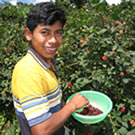 |
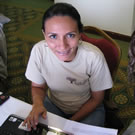 |
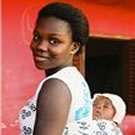 |
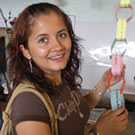 |
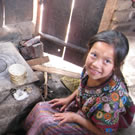 |
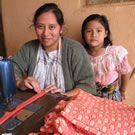 |
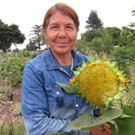 |
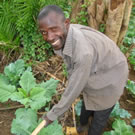 |
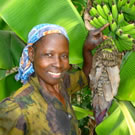 |
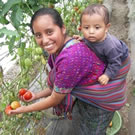 |
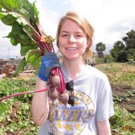 |
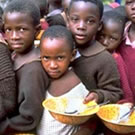 |
If you are not comfortable with photography, take a photographer that can take candid shots. The local office will know of a good one, and it will be an inexpensive investment in comparison to the cost of your trip and the value of the professional photos once back home for use in reports, proposals and newsletters.
I know this sound like a lot to do, but there is plenty of free time if you are tagging along and not being actively engaged by a handler or herded along with a group.
If your donors have their hearts warmed with your images and feel that you captured the essence of their mission in your project report, you will have a greater likelihood of maintaining your partnership. Good luck with your next writing and photo assignment: get out there, smell the dust, feel the heat, meet the people and enjoy your new friends—the people that are the source of your compelling photos.
Sincerely,
Tim Magee
Tim Magee is the author of A Field Guide to Community Based Adaptation published by Routledge, Oxford, England.
